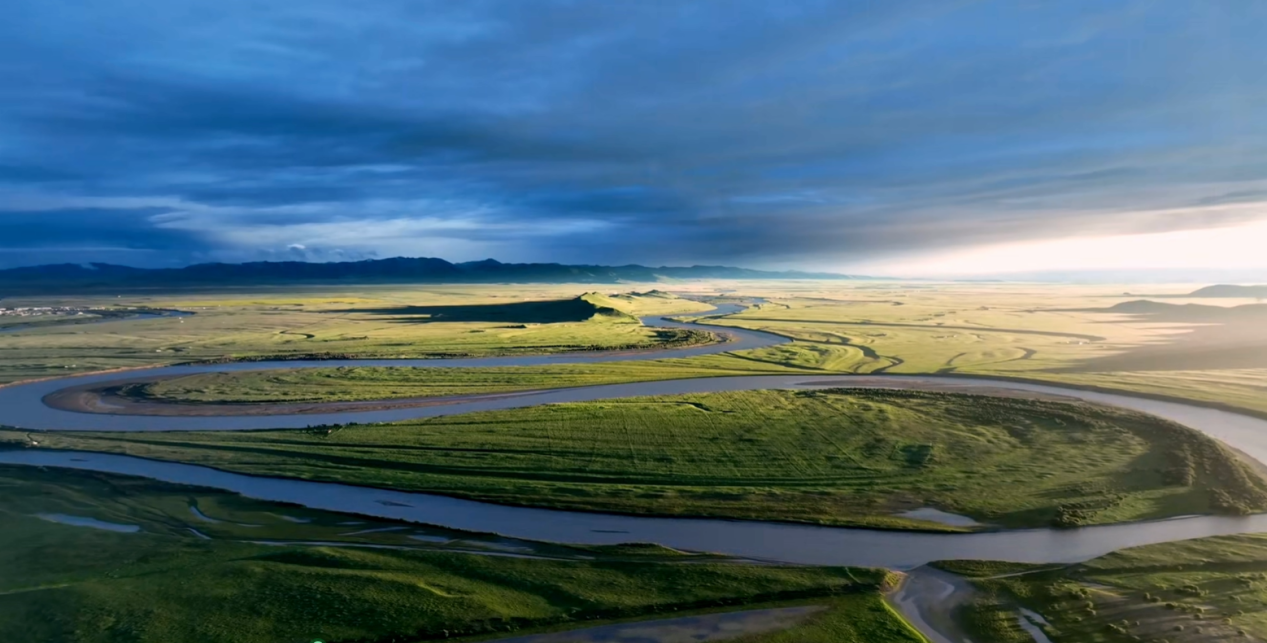Fri Jan 09
Culture China Tour | Gen Z’s Journey into Yellow River Culture: Sichuan Edition - The Most Beautiful Glance from the Land of Abundance
 2024-11-04
2024-11-04


The Yellow River, originating from the gentle streams of the Bayankala Mountains, gathers strength as it surges forward. Flowing west to east, it enters Sichuan from Gansu, roaring with vitality. As it traverses the Zoigê Grassland, the river lingers, leaving behind a breathtaking “glance” as it curves through the land of Aba. Like a mother extending her arms, it embraces the surrounding landscape, nourishing the vast terrain with its life-giving waters...

The Yellow River runs for a total of 174 kilometers within Sichuan, with 148.8 kilometers flowing through Zoigê County in the Aba Tibetan and Qiang Autonomous Prefecture. In this region, Jinan International Communication Center bilingual host, Xinyu, witnessed the grand sight of the First Bend of the Nine Bends of the Yellow River. The river winds like a giant dragon, creating a stunning series of curves and bends.
Here, thanks to a gentle turn of the Yellow River, the water flows mostly in meandering loops. The landscape of grasslands, flower seas, and grazing cattle and sheep forms a classic and representative natural scene along the Sichuan section of the Yellow River.

To protect this precious gift from the Yellow River to the land of Aba, a group of women wearing pink vests can be seen by the riverside, collecting litter with tongs in one hand and woven bags in the other. These women are not sanitation workers; they are members of the “Amala” Yellow River Women’s Volunteer Patrol Team, dedicated to safeguarding the river.

Zhang Huiling, Secretary of the Party Branch in Baihe Community, Tangke Town, Zoigê County, told Xinyu that the “Amala” Yellow River Women’s Volunteer Patrol Team is a self-organized group of 75 volunteers, mainly responsible for cleaning up litter and protecting the ecology along the Yellow River in the Tangke area of Zoigê County. The team members come from four ethnic groups: Han, Tibetan, Hui, and Qiang.
Alongside women representatives from Aba Prefecture, members of the “Amala” team planted a 6.07-acre “Women’s Forest” on the Baihe Ranch, declaring war on ecological degradation. These women, without pay and undeterred by wind or snow, take turns in groups to water and replant in the forest. They regularly patrol the ecological protective belt along the Yellow River’s main and tributary streams, picking up litter, discouraging uncivil behavior, and monitoring direct wastewater discharge, all to ensure the mother river’s waters continue flowing clean and clear to the east.

For thousands of years, the Yellow River has nourished Aba’s land and its pastures, raising generations of its people and leaving behind a rich and unique Yellow River culture.
In Nenwa Township, Zoigê County, local herders are holding a dung art wall event. In their hands, what used to be scattered yak dung on the grasslands is now transformed into “art pieces”, decorating the plains with images of yaks, Hequ horses, and pandas. According to A Wangjiu, the Party Secretary of Nenwa Township, yak dung, known as “jiuwa” in Tibetan, is the primary fuel for herders to brew tea and cook meals. The dung art wall, made by local herders over the course of a month, reflects this tradition.

A millennia-old nomadic history has given rise to a unique dung culture in Aba, intertwined with local customs and humanistic values. The dung art wall is not only a continuation of traditional nomadic culture but also serves as a bridge connecting people with nature and linking tradition with modernity.

The beautiful glance of the Yellow River in Sichuan formed magnificent nature scenery, it also irrigated the abundant national culture. Sichuan people, benefited by the Yellow River, have always adhered to the way of harmonious coexistence with nature. This land, nourished by the river for thousands of years, is writing a new chapter of ecological harmony and ethnic harmony.




